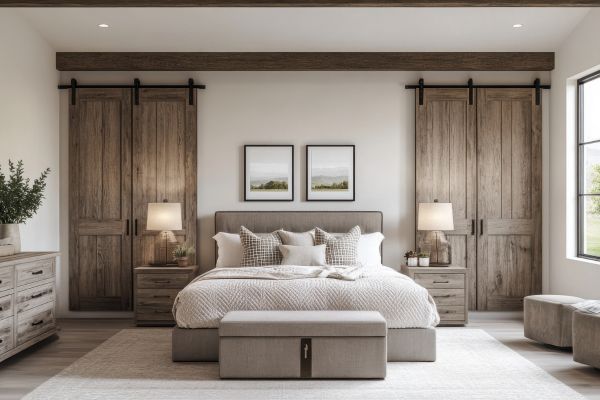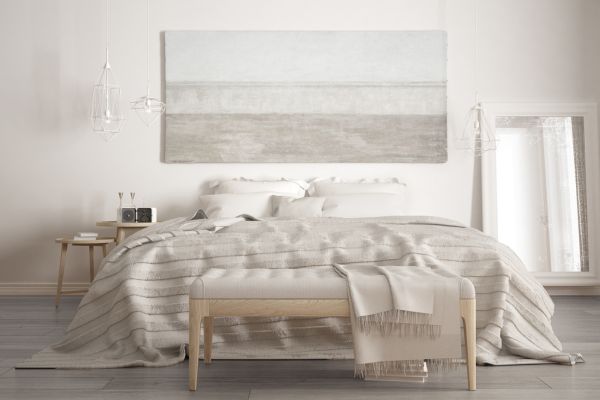In a world where innovation is reshaping the way we think about housing, container homes have emerged as a groundbreaking solution for sustainable and affordable living. These homes, crafted from repurposed shipping containers, are gaining popularity for their eco-friendly design, cost-effectiveness, and versatility. But what exactly makes container homes so appealing? Let’s dive into the world of container homes, uncovering why they’ve become a go-to choice for many aspiring homeowners, and what you need to know before investing in one.
What Are Container Homes?
Container homes are residential structures made from intermodal shipping containers—yes, the kind you’d usually see stacked high on cargo ships. These sturdy, steel containers are incredibly durable and are often used in the construction of homes because they’re easy to modify, transport, and stack. As the housing market evolves, more people are turning to alternative housing solutions, and container homes are leading the way.
Why Choose a Container Home?
The rise of container homes isn’t just a trend; it’s a reflection of how we’re thinking differently about our living spaces. People are increasingly looking for ways to reduce their carbon footprint while maintaining a comfortable lifestyle. Container homes check both boxes, providing an eco-conscious housing option that doesn’t skimp on style or function.
- Sustainability: One of the most significant advantages of container homes is their environmental impact. Repurposing shipping containers reduces waste and promotes recycling, making it an ideal choice for eco-friendly living.
- Affordability: Traditional homes can be expensive to build and maintain. Container homes offer a more affordable option without sacrificing quality. Because the containers themselves are readily available, building costs are often much lower than traditional homes.
- Durability: Built to withstand harsh conditions at sea, shipping containers are incredibly tough. This means your container home is likely to be more durable than conventional housing, especially in extreme weather conditions.
- Flexibility in Design: The modular nature of shipping containers allows for creative and flexible design options. You can stack them, cut out sections for windows or doors, and join multiple containers to create larger spaces.
- Faster Construction: A container home can be built much faster than a traditional home. Many builders can complete a container home in a matter of weeks, whereas standard construction projects can take months, if not longer.
The Building Process of Container Homes
Building a container home isn’t as simple as stacking some containers and calling it a day. There’s a thoughtful process behind it, involving key stages to ensure that your home is safe, comfortable, and tailored to your needs.
1. Site Selection and Preparation
The first step is finding the right location for your container home. Once you’ve secured a site, it needs to be prepared, which may involve leveling the ground, installing a foundation, and ensuring access to utilities like electricity, water, and sewage systems.
2. Designing Your Container Home
One of the most exciting parts of building a container home is the design phase. You can work with architects and builders to customize the layout, incorporating open spaces, multi-level designs, and creative elements like rooftop decks or large windows for natural light.
3. Modifying the Containers
Once the design is finalized, the containers are modified to fit your specifications. This includes cutting spaces for windows, doors, and other architectural features. The container is then reinforced and insulated to ensure it meets building codes and provides adequate insulation for both hot and cold weather.
4. Assembly and Finishing
After the containers are modified, they are transported to the site and assembled. Once the containers are in place, interior finishes such as plumbing, electrical work, and flooring are completed.
Pros and Cons of Container Homes
Like any housing option, container homes have their pros and cons. It’s important to weigh these factors before deciding if this unique housing solution is right for you.
Pros:
- Eco-friendly: Reduces waste by repurposing materials.
- Cost-effective: Less expensive than traditional homes.
- Fast construction: Can be built in weeks rather than months.
- Modular design: Easily customizable and expandable.
Cons:
- Zoning restrictions: Some areas may have strict regulations against alternative housing.
- Temperature control: Without proper insulation, containers can be prone to temperature fluctuations.
- Permitting challenges: Depending on your location, acquiring permits for a container home can be tricky.
FAQs About Container Homes
Q1: Are container homes safe?
Absolutely! With proper modifications and construction, container homes are just as safe as traditional homes. They’re designed to withstand extreme weather, and when properly insulated, they provide the same comfort levels.
Q2: How long does a container home last?
A well-maintained container home can last for decades. The steel structure is incredibly durable, and with proper care and regular maintenance, your home can stand the test of time.
Q3: Are container homes legal everywhere?
Container homes are not universally accepted, and some local governments have strict zoning regulations that may prohibit or restrict their construction. It’s important to check local building codes before starting your project.
Q4: Do container homes require a foundation?
Yes, like any home, a container home requires a foundation. The type of foundation can vary depending on the location, soil type, and the design of the home.
Q5: Can I expand a container home later?
One of the best features of container homes is their modular nature. You can easily add more containers or expand the home as needed, making them an excellent choice for growing families or changing needs.
Design Ideas for Container Homes
When it comes to designing your container home, the sky’s the limit. Here are some popular design ideas:
- Rooftop Deck: Use the flat roof of the container to create a stylish rooftop deck, perfect for lounging or hosting guests.
- Large Windows: Maximize natural light by incorporating large windows. This not only makes the space feel more open but also reduces the need for artificial lighting.
- Open Floor Plan: Opt for an open floor plan to make the most of the container’s limited space. Removing interior walls can create a sense of spaciousness.
- Vertical Stacking: Stack containers vertically to create a multi-level home. This design works especially well for smaller lots or urban areas where space is limited.
Conclusion: Is a Container Home Right for You?
Container homes are more than just a trend—they represent a shift in how we think about sustainable, affordable living. Whether you’re looking for a smaller footprint, lower costs, or a faster way to own a home, container homes offer an innovative solution. However, it’s essential to consider the potential challenges, like zoning laws and permitting issues, before embarking on this journey.
With the right planning, design, and construction, your container home can be a durable, eco-friendly sanctuary that reflects your personal style and values. If you’re ready to take the plunge, now might be the perfect time to explore the world of container homes and see how this modern housing solution can fit into your future.



